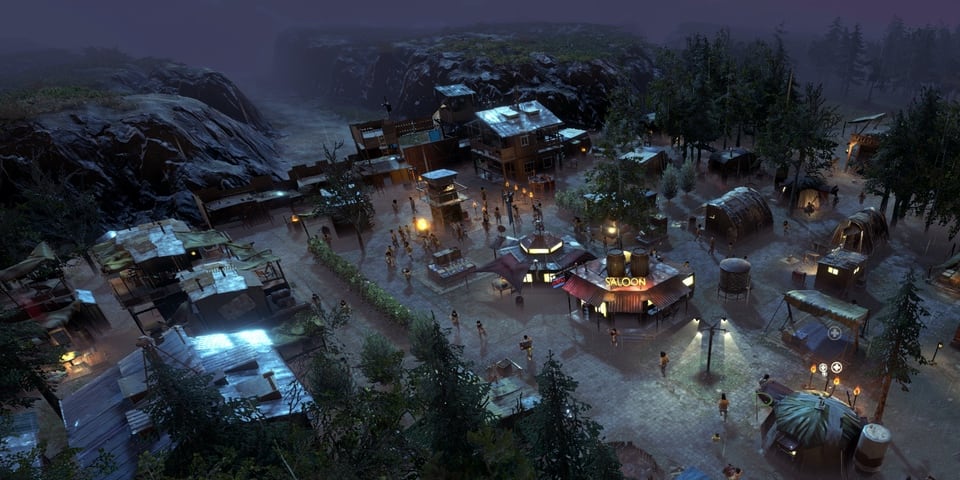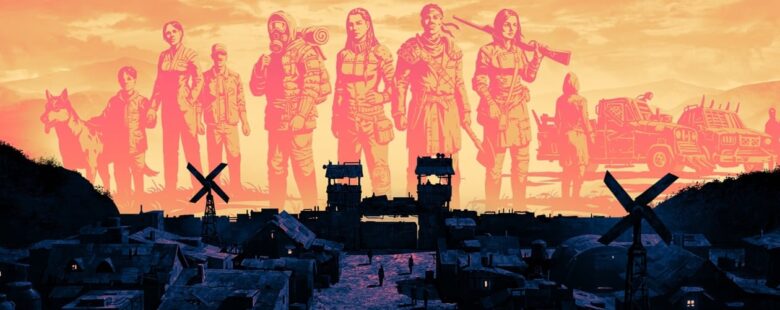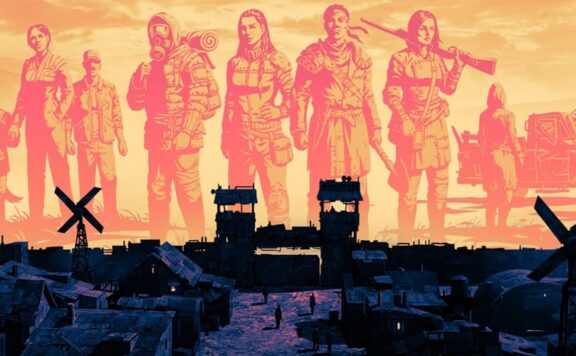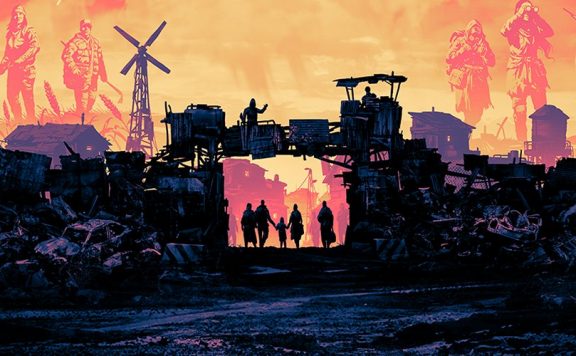Since the dawn of civilisation, each generation of humanity has been convinced that they will be the last. Be it war, plague, climate change, angry AI or finger snaps, we as a species are obsessed about our own annihilation. The sobering thought is that, despite the last 107 billion people that have ever lived being completely wrong with their predictions, there will eventually be a generation that is correct. But what happens next? What about the few people that live through the downfall and are left to survive the aftermath?
Surviving the Aftermath tasks you with guiding a hardy bunch of survivors to rebuild from the apocalypse. Whilst details are scarce, it soon become clear that the apocalypse was a varied affair. Over the course of the game you’ll need to protect your pensive pals from hordes of raiders, packs of mutated beasties, fire storms, freezing winters and copious splurges of pollution. You’ll do this by instructing the survivors to gather resources and build up their colony. Surviving the Aftermath is ostensibly a colony management sim, though one that seems intent on making your settlers suffer as much as possible.
Initially it will seem that Surviving the Aftermath, on console at least, wants to make the player suffer as much as possible too. The controls are, without doubt, the most confusing and contradictory concoction of inputs I’ve ever had to endure. Navigating the menus is a permanent chore and, even after hours of play, I still found myself regularly tapping the wrong button and plunging myself into an unexpected sub-menu that takes far too long to back out of. However, persist with the madness and there’s a lot to like about the game.

First off, there’s a palpable sense of tension created as you attempt to fend off and perhaps preempt the many disasters that will befall your budding colony. At one point a deadly pandemic was ripping through my population, water supplies were running low, we’d run out of wood and suddenly a bunch of hooligans arrived at my village gates demanding tribute money. It was thrilling, creating a sense of having to genuinely push through and strive to survive. Survive we did, but it was a close one and required a frenetic response. This is not a game then for those who like to get a little obsessive and compulsive with their Tycoon-like sims. Things get messy here very quickly. For example, to survive the many sudden illnesses that befall your population you’ll be forced to throw up a multitude of medic tents in short order with little regard for how their cluttered formation ruins the aesthetic integrity of your settlement.
Despite all that survivalist excitement, the majority of your time will be spent gathering resources. To be fair to Surviving the Aftermath, it does a good job of making the tedious need to force numbers next to icons to increase as exciting as it can possibly be. Recycling centres can be built to amass plastic from mountains of litter, trees must be chopped down – and planted again – to gather wood, whilst the gathering of food and water is a constant ordeal. Just pray the procedurally generated map grants you with rivers to build fishing huts on, otherwise the early going is mighty tricky until your society figures out agriculture. There’s a massive research tree of things to unlock, though the gathering of research points relies on the most underwhelming aspect of the game; the world map.

As you play you’ll gather a team of charismatic specialists who can be sent out to the world map in order to explore, battle bandits and gather more resources. This might sound fun, but it’s actually a bit boring. Everything on the world map is turn based, leading to specialists having to spend a small age foraging in a city to earn a few research points that you can use back at your settlement. Combat meanwhile is merely a case of a green bar gradually turning red. There’s little strategy to be had; just throw more specialists at any fight and you won’t go far wrong.
Unfortunately, the drudge of exploring the world map is utterly vital to proceed through the game, as it is here you’ll find resources you won’t discover anywhere else as well as complete narrative missions. It really kills the pacing of the game. It’s a shame, as all I wanted to do was get back to the fun of building my settlement and ensuring all my little dudes had smiley face emojis.

Building is undoubtedly the most enjoyable aspect of Surviving the Aftermath. There’s a hug variety of buildings to try out. Things start out pretty basic, but with a bit of time, effort and good luck, you’ll be building double story housing and ensuring your inhabitants have an entertainment centre to enjoy. Elements of the map must be assessed on a regular basis, because if you build all over prime bits of the water table, you’ll be kicking yourself when it’s time to pump up the H2O from far below.
It’s just a shame that early on the buildings are so visually indistinctive. The problem with tents and sheds is that from a birds-eye view they all tend to merge together into a browny grey mess. This made for issues in the early game; trying to find a food storage shed amongst all the other types of sheds required a lot of searching and clicking. This problem fades from memory by the end game, when some rather exciting buildings are yours for the constructing.



